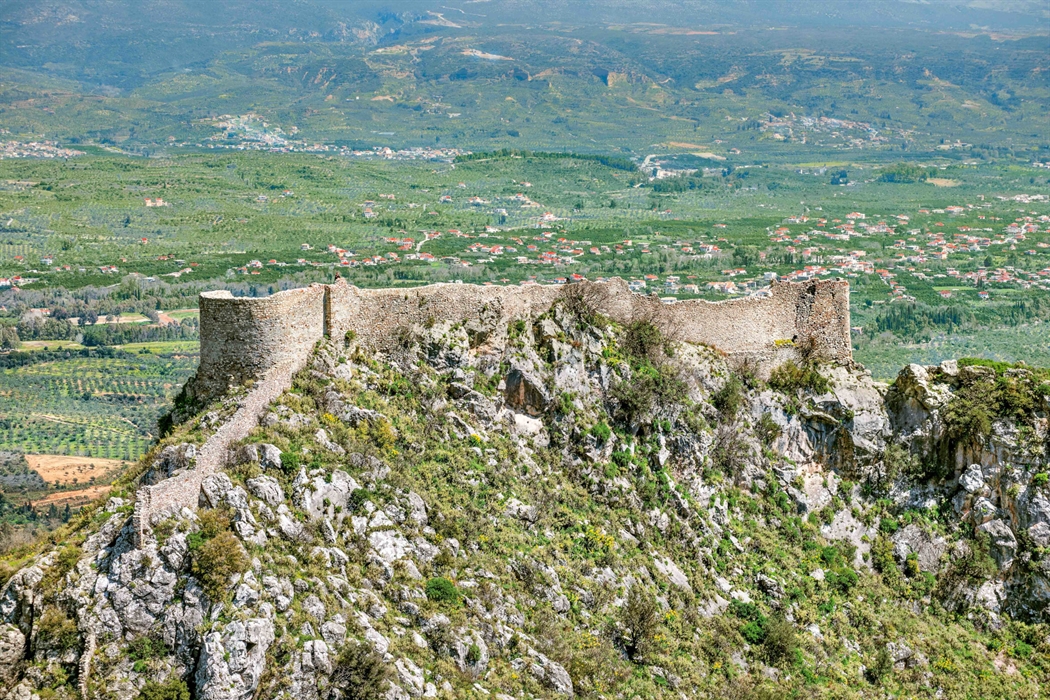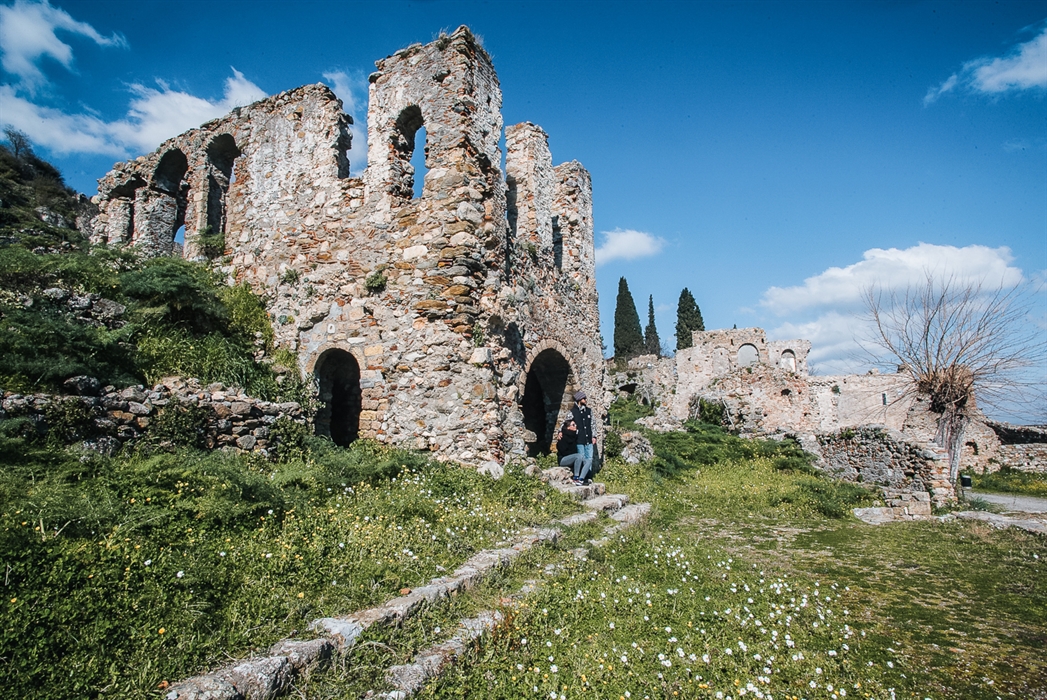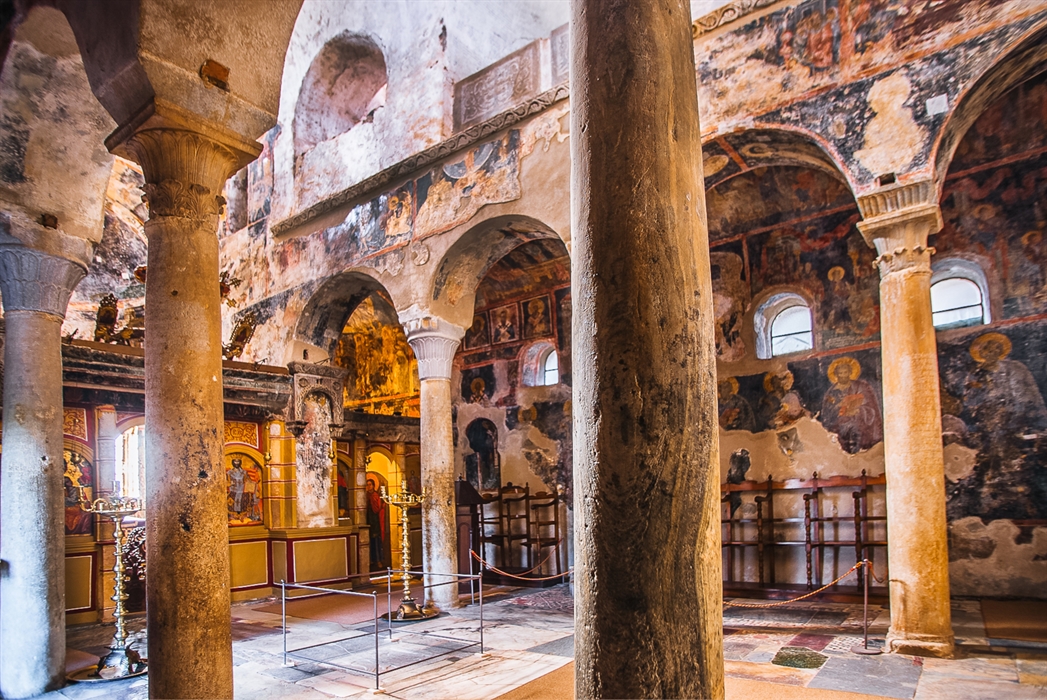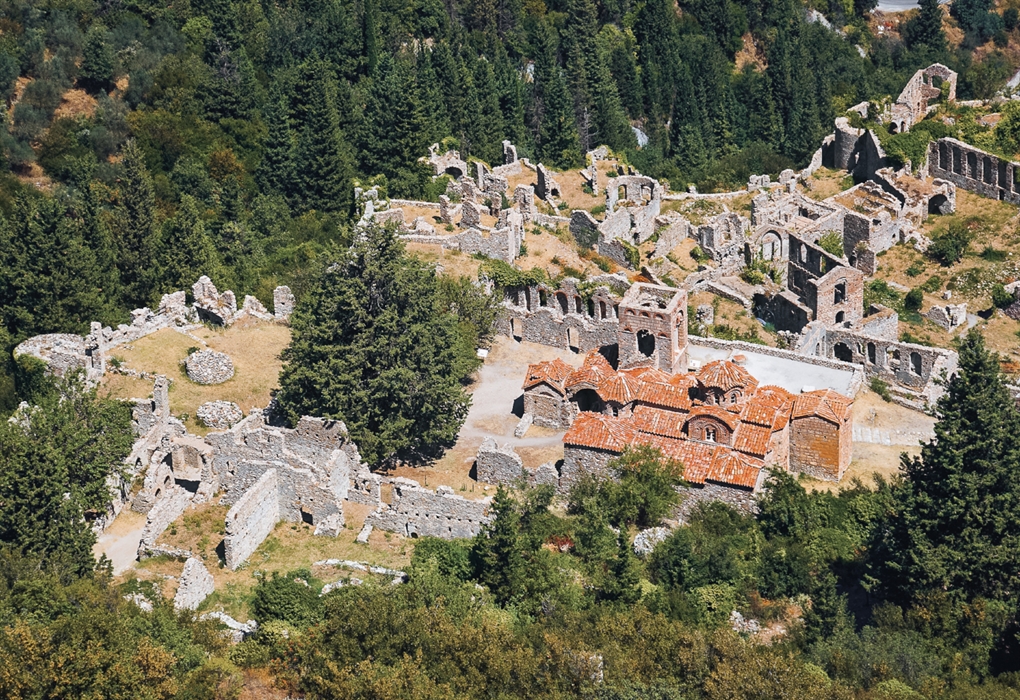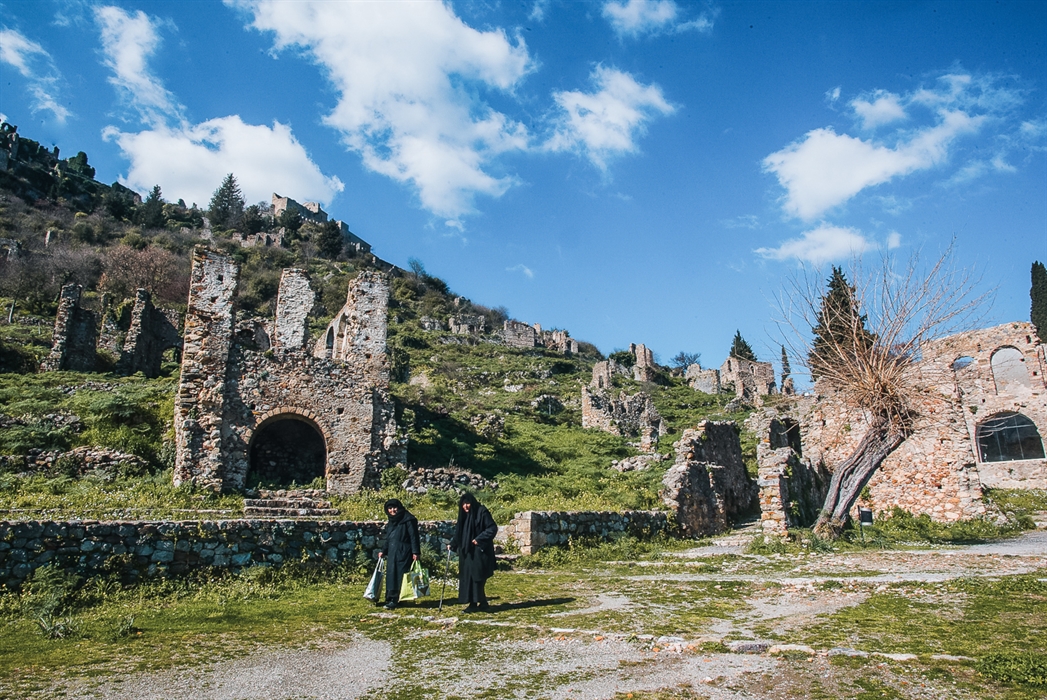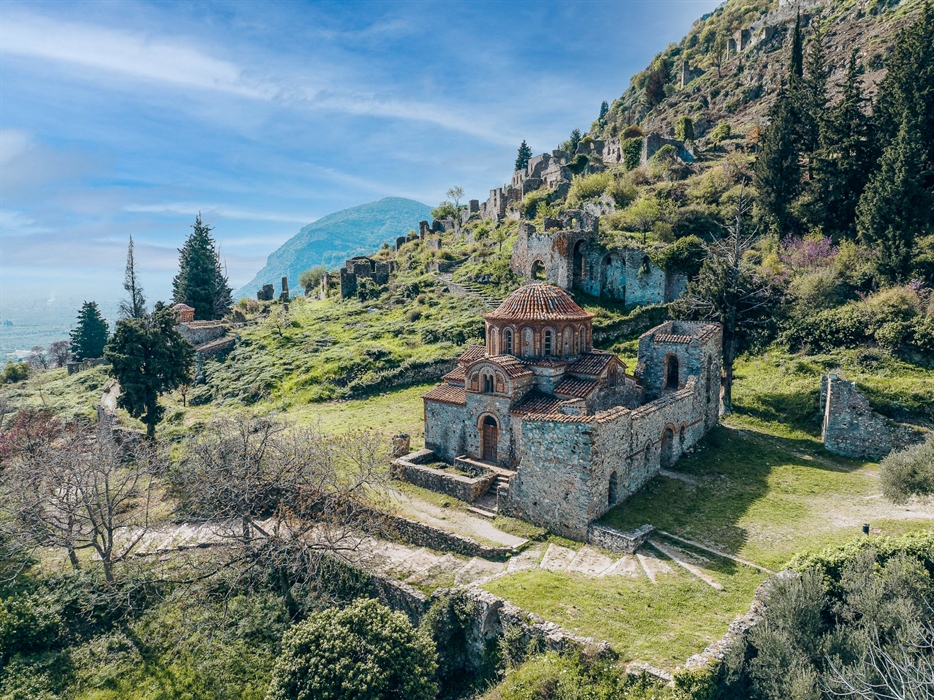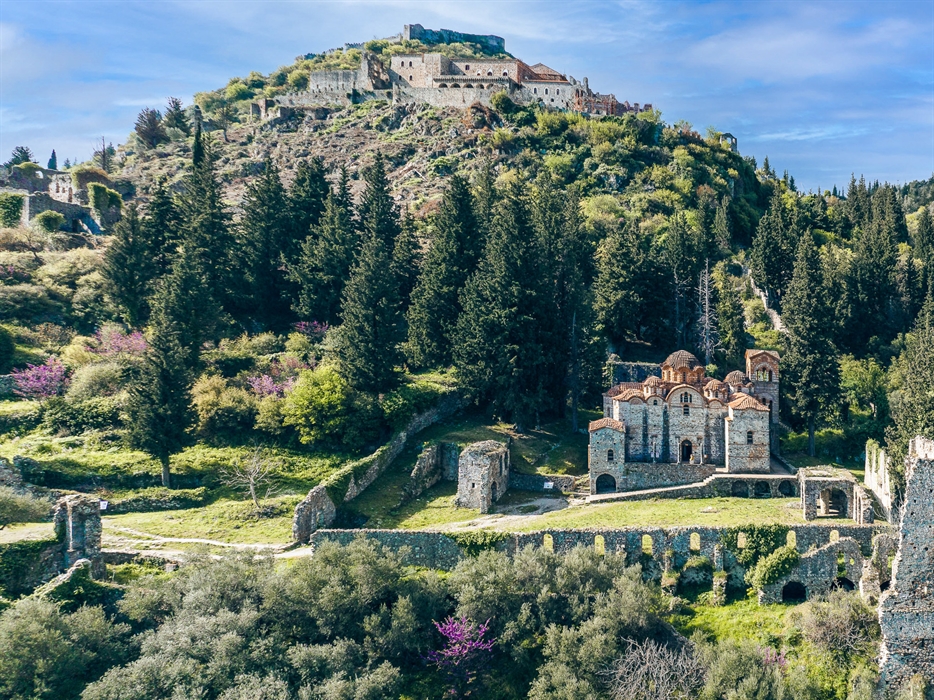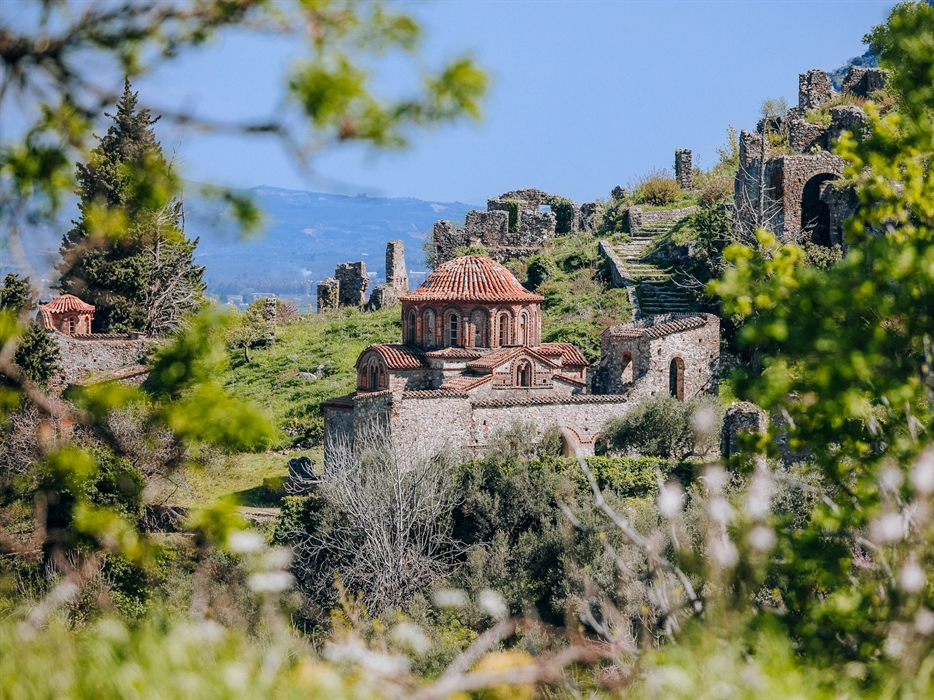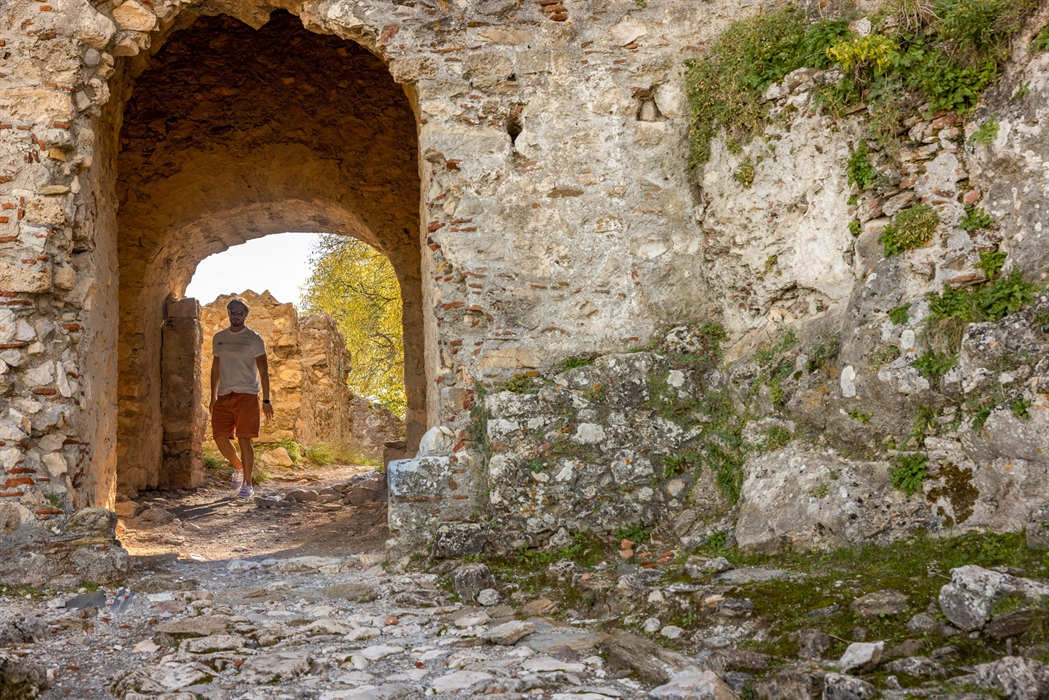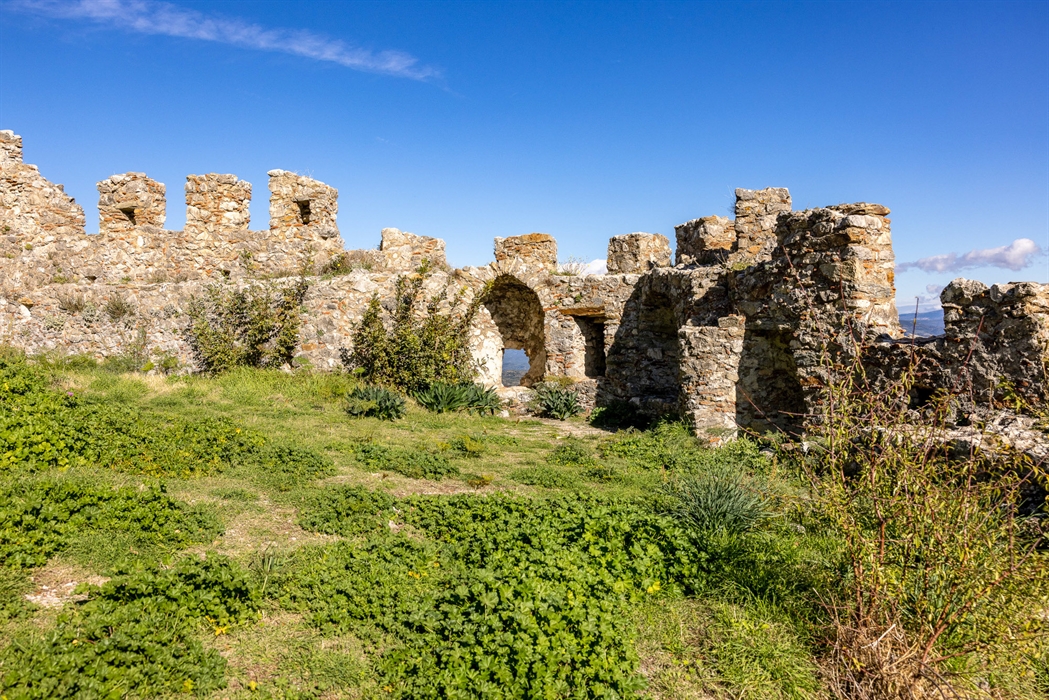The city-state of Mystras
Mystras is a late-Byzantine city-state with an illustrious past. It has been uninhabited since 1953, but many of the old houses and churches are exceptionally well-preserved, meaning you can “step back in time” and get a real sense of life here over the centuries. In its heyday it was one of the most important cities in Byzantium, and was ruled by Constantine XI Dragases Palaiologos who became the last Byzantine Emperor. Mystras thrived under his rule and was home to a renaissance movement when science, philosophy and art flourished here. Mystras was declared a UNESCO World Heritage Site in 1989.
Mystras is a late-Byzantine city-state with an illustrious past. It has been uninhabited since 1953, but many of the old houses and churches are exceptionally well-preserved, meaning you can “step back in time” and get a real sense of life here over the centuries. In its heyday it was one of the most important cities in Byzantium, and was ruled by Constantine XI Dragases Palaiologos who became the last Byzantine Emperor and who died defending Constantinople from the Ottomans. Mystras thrived under his rule and was home to a renaissance movement when science, philosophy and art flourished here. Mystras was declared a UNESCO World Heritage Site in 1989.
The history of Mystras is one of the most fascinating stories of Byzantium. The city was founded in 1249 and its Byzantine history came to an end in 1460 when it was surrendered to the Ottomans without a fight by the last Despot, Dimitrios Palaiologos. The castle itself, however, never fell.
HISTORICAL DETAILS
The original strong wall and the castle were built on isolated Myzithra hill in 1249 by the Frankish prince William II Villeardouin, to whose family the Peloponnese had been granted after Constantinople fell to the Crusaders of the Fourth Crusade (1204). The hill was an ideal point for controlling the valley of Eurotas, where the Melingoi, a Slavic tribe, also lived. In the battle of Pelagonia in 1259 the prince was taken prisoner by the Byzantines and Emperor Michael VIII demanded the castles of Mystras, Monemvasia, Mani and Geraki as ransom. The request was finally met in 1262 and the nucleus of the subsequent Despotate was formed. Byzantine territory expanded rapidly, and the constant wars between the Byzantines and the Franks began.
In 1289 the provincial capital of the Byzantine territories in the Peloponnese was moved from Monemvasia to Mystras, and in 1349 Mystras became the capital of the semi-autonomous Despotate of the Morea. The first Despot was Manuel Kantakouzinos (1349-1380), son of Emperor Ioannis VI.
From 1382 to 1460 the Despotate was ruled by the Palaiologos family. During these years they maintained very close relations with Constantinople and the emperors supported Byzantine interests in the region, but the Palaiologos rulers also drew up their own policies. The Despotate flourished under the Palaiologos despots who became the dominant force in the Peloponnese and implemented expansionist policies.
Constantine XI was the best known and most remarkable of the Palaiologos Despots. He was involved in Hellenism’s last attempts to resist the coming Ottoman invasion and in addition to his administrative, diplomatic and strategic skills, his name is associate with the Palaiologan Renaissance -a time when many thinkers, artists and historians lived in the city. This movement had spread from Constantinople to Mystras and contributed to the development of science, philosophy and art just before the fall of the Byzantine Empire.
Constantine was crowned Emperor of Byzantium and was killed in 1453, fighting in the siege of Constantinople before it fell to the Ottomans.
The golden era of the Despotate of Mystras came to an end with his death. His brothers who succeeded him in 1449 caused chaos and anarchy with their quarrels, and the only beneficiaries were the Ottomans. In 1458, Mohammed II occupied the NE Peloponnese and advanced directly to Mystras. On May 30, 1460, Dimitrios finally handed Mystras over to General Mahmut Pasha. This was the end of the Byzantine period in Mystra’s history, and was not long before this story was repeated in the other castles in the Peloponnese.
By 1540, Mystras had become the capital of Ottoman Peloponnese and one of the most important silk production and trading centres in the Eastern Mediterranean. Between 1687-1715 the city was controlled by the Venetians, but then returned to Ottoman rule. The city joined the Orlov revolt against Ottoman rule in 1770, with the result that the city went into a steep decline as it was destroyed by Ottoman Albanians.
Mystras continued to decline: In 1834, the inhabitants began to move the new city of Sparta, but it wasn’t until 1953, when the area was expropriated by the Greek state, that the last people left the city.
It was declared a prominent Byzantine monument by royal decree in 1921.
THE MONUMENTS
One of the many things that makes Mystras special is that it is a remarkably well-preserved Byzantine city, something which has given experts the opportunity to study the architecture and art of the time. The church buildings are particularly important as many of them are in a very good condition.
The fortified city is built on the slopes of a hill and had three districts, the Upper City, the Lower City and the Outer City, which were all packed with monasteries, churches, chapels, houses and palaces.
The Frankish citadel and castle. The built by Prince William II Villehardouin has been altered by the Byzantines, the Franks and then the Ottomans. It had a double line of defence with two fortified enclosures which were reinforced with square, or cylindrical, towers.
The Palaces. The Palace complex was the seat and residence of the Byzantine rulers known as Despots and was completed in the 15th century. The sections known as the Kantakouzenos wing and the Palaiologos wing are particularly interesting and the imposing Golden Throne Room is on the second floor of the Palaiologos wing.
The houses surrounding the Palace. Many of the houses are in good condition and it is believed that the aristocracy lived here. Keep an eye out for the Laskaris and Fragopoulos mansions (15th century) in the Lower City and the Palataki mansion in the Upper City as these are more complete and give you an idea of what the other mansions and homes must have been like.
The churches. In the past all the churches were part of monasteries, but today only the Pantanassa Monastery is still inhabited. Architecturally speaking, most of the churches are “mixed form”, i.e. a basilica combined with a cross-in-square, five-domed gallery. This style of architecture was created here and is now known as the “Mystras type”. When it comes to the church interiors, you will see excellent decoration from the Palaiologos era, frescoes from the 17th-18th century and also Western-influenced sculptural decoration. As well as the larger churches, there are also 20 chapels in the city.
Agios Dimitrios Cathedral (around 1270). The oldest church in Mystras. This was a functioning cathedral from the time it was built until shortly after the city was liberated from Turkish rule. According to tradition, the last emperor of Byzantium, Constantine XI Palaiologos, was crowned here in 1449.
Vrontochi Monastery: Includes the Church of Our Lady Hodegetria and Agious Theodorous. The monastery is in the Lower City and was the oldest and largest monastery in Mystras. It was founded in the 13th century and was directly under the Patriarch of Constantinople. The monastery became very wealthy, with important libraries, and became the centre of spiritual life in Mystras. Plethon, one of the main figures in the Byzantian renaissance, taught here.
The first written testimony about the Church of Our Lady Hodegetria dates from between 1311 and 1312. The church acquired its second name, Afthentiko (boss), at the end of the 19th century. You can see some early 14th century frescoes inside the church and the tomb of Despot Theodoros I Palaiologos who died in 1407 is in the north-west chapel of the narthex. During the Turkish occupation it was converted into a mosque and later fell into ruins.
Agioi Theodoroi, an octagonal church with 4 chapels, dates back to before 1296. There are fragments of impressive frescoes showing saints, the passion and the Resurrection of Christ etc. The representations of Saint Theodoros are considered to date from the 13th century.
Agia Sophia Mystra (Palace district). The church is thought to have been the main church of Zoodotis Christos Monastery (Life-Giver Christ), which was founded by the first Despot of Mystras, Manuel Kantakouzenos in the middle of the 14th century.
Pantanassa (1428). This church has a three-aisled basilica on the ground floor and a five-domed cross-in-square church with a dome on the first floor. You can still see the original frescos (from around 1430) on the domes and the ceiling. This is still a working monastery, and if you are lucky, the nuns will welcome you with homemade traditional sweets.
Evangelistria. This is a domed, cross-in-square church. It has an interesting iconostasis and wall paintings from the 15th century.
Perivleptos (mid 14th c.), was the main church of the Panagia Monastery and is believed to have been built by Manuel Kantakouzenos. The frescoes in the main church are from the third quarter of the 14th century, and are the work of four painters.
Agios Nikolaos Mystras (17th century, Palace district). This is the only church of this size in Mystras, and was built after the city was surrendered to the Turks in 1460. Only a few wall paintings, which are typical of Laconian painting during the 17th century, have survived.
Did you know that
You can start exploring the archaeological site either from the main gate, or from the upper gate (of the Fort). The area is signposted.
Google Maps has a detailed presentation of the entire archaeological site, with every monument being identified and information being given on it. See here
Mystras is 6 km from Sparta.
The last Emperor of Byzantium Constantine XI Palaiologos (See more in Mystras)
The legend of the "Marbled King" who will wake up to liberate Constantinople from the Turks is connected to Constantine I Dragatsis Palaiologos, commander of the Despotate of Moreos who was crowned Emperor of Byzantium in Mystras.
Constantine XI Dragases Palaiologos was the last Byzantian Emperor, and before that the Despot of Moreos, the Byzantine state that once covered most of the Peloponnese. There is a popular Greek legend that Constantine did not actually die when fighting to defend Constantinople, but instead was rescued by an angel and turned into marble. He was hidden beneath the Golden Gate in Constantinople where he is waiting for a call from God so he can come back to life and reconquer both the city and the old empire.
Constantine XI Dragases Palaiologos, son of Manuel II Palaiologos, was born in 1404. He took over the administration of the Despotate of Moreos and quickly emerged as a leading figure. Together with his brother Thomas they recovered the areas of Morea which had been occupied by the Crusaders. He then aimed to restore Byzantine rule, not only to his region, but also to other regions in Greece by fighting against the Ottomans. He managed to fulfil many of his objectives and reached as far as Roumeli and Thessaly (although these areas were eventually recaptured by the Ottomans).
He was crowned Emperor of Byzantium in Mystras, on January 6, 1449, and left for Constantinople in Catalan ships. He fell fighting on the walls during the Ottoman siege of Constantinople and its subsequent fall in 1453
The “Palaeologan Renaissance” in Mystras. A brilliant period of renaissance in Byzantine art and philosophy which influenced the more famous Italian renaissance developed under the Palaiologos rulers of Morea. At the same time, as with the Italian Renaissance, there was a shift towards classical antiquity and ancient Greek culture. The Palaeologan Renaissance began in 1261 when Constantinople was recaptured by Michael VIII Palaiologos. Mystras in the Peloponnese was one of the centres of the movement and was home to many philosophers, teachers and artists. Unusually, this revival of Byzantine culture through intellectuals and thinkers took place at the same time as the empire was in administrative and economic decline and going through civil wars and social misery. This movement was highly influential across all spheres - art, letters and sciences and was a forerunner of the renaissance in Western Europe.
Mystras was almost on a par with the great city of Constantinople in nurturing this movement. An awakening of national consciousness, new ideas, visions, art, iconography, and architecture sprang from the courts of the Palaiologos Despots - especially Constantine XI. Philosophers, artists, historians and scientists moved to Mystra to write, teach and study, and to rescue ancient texts. This small city was home to a throng of renaissance figures such as the humanist Cardinal Vissarion, the theologian John Eugenikos, the historian Laonikos Chalkokondyle and, perhaps most influential of all, the philosopher Gemistos Plethon who died in Mystras in 1952.
Plethon is a significant cultural figure who moved to Mystras from Constantinople around 1414. He was not only a teacher and scholar, but was also an active politician. He was a great admirer of ancient Greek thought in general, and of Plato in particular, and re-introduced Plato's ideas to Western Europe.
Location
Find the destination on the interactive map below.
Categories
Weather
Σχετικό περιεχόμενο χρηστών (UGC)
Ενημερωθείτε για ενδιαφέροντα θέματα γύρω από τον προορισμό μέσα από το περιεχόμενο των χρηστών μας
Discover 7 hidden gems of the Peloponnese
Many of you may have already visited some of the most renowned attractions…
TOP 10 archaeological museums in the Peloponnese
Olympia, Mycenae, Epidaurus, Diros Cave, Ancient Corinth, Messene and…
TOP 10 Castles in the Peloponnese
Castles galore! Mystras, Monemvasia, Palamidi, Methoni, Koroni,…
Newsletters
- About us
- FAQ's
- Map
- Tourism information centers
- Disclaimer
- Sitemap
- Our brand
- Media roum
- Adding your bussiness
- Corporate
- MICE

Peloponnese. Greece beyond the obvious





Design and creation from Cosmote
Marinas and Moorings
Diving centers
Get inspired
- Media gallery
- Blog
- The Peloponnese in the media
- Your feedback
- Users' general content
- Users' local products
- Users' events content
- Ask a local
More
- Accommodation
- Travel agencies
- Restaurants
- Services
- Destinations Map
- Weather
- Public transport
- Events
- Frequently asked questions
- Useful phones
- B2B
- Destination Data
- Contact

